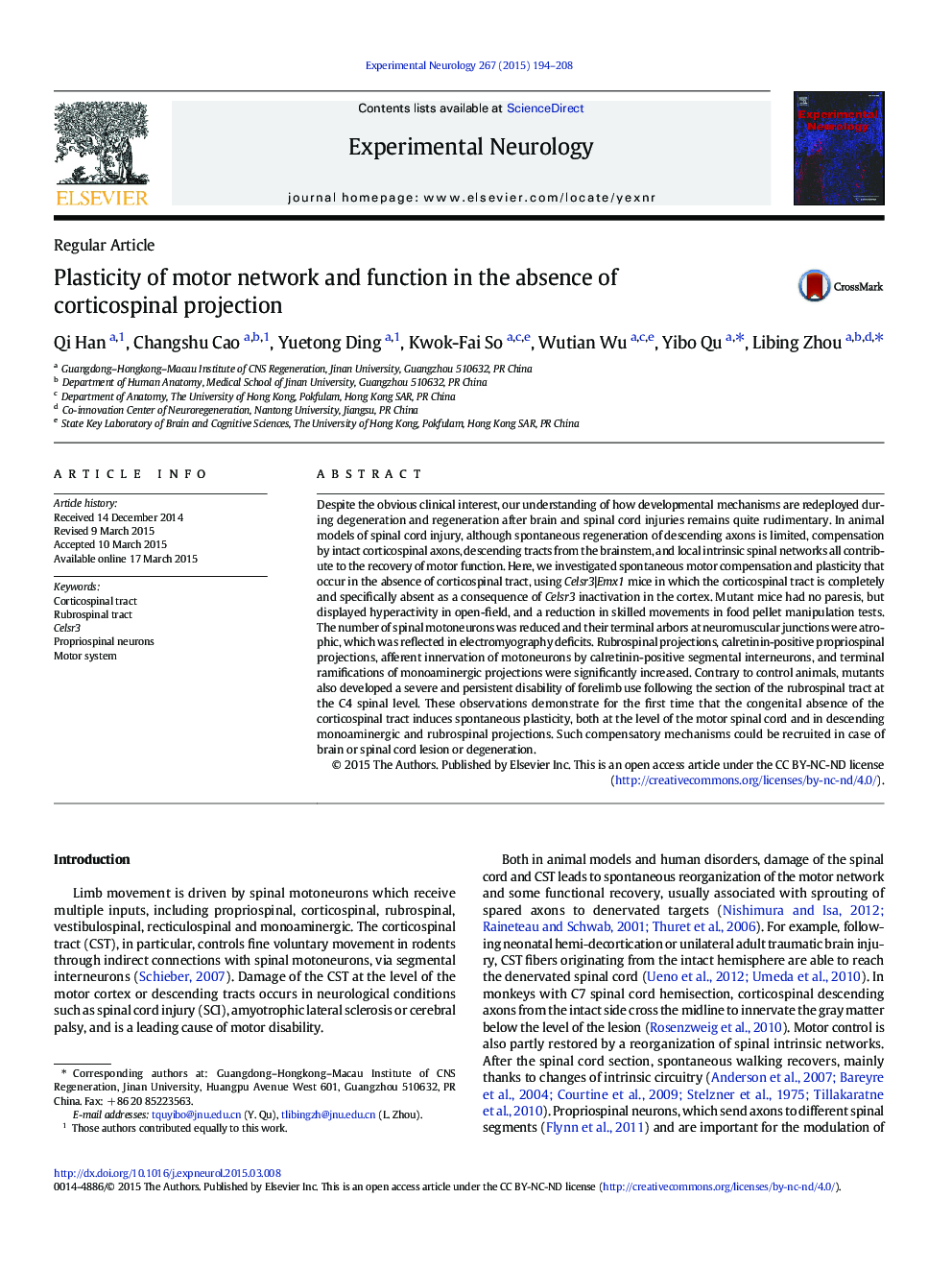| کد مقاله | کد نشریه | سال انتشار | مقاله انگلیسی | نسخه تمام متن |
|---|---|---|---|---|
| 6017797 | 1580166 | 2015 | 15 صفحه PDF | دانلود رایگان |
- A novel mouse model with the congenital absence of the CST to study motor plasticity
- Compensation by the RST contributes to motor control but not skilled movements.
- Increased monoaminergic fibers in mutant spinal cord
- Increased afferent innervations of motoneurons by calretinin-positive spinal neurons
- Plasticity mechanisms could be recruited in functional recovery following CST injury.
Despite the obvious clinical interest, our understanding of how developmental mechanisms are redeployed during degeneration and regeneration after brain and spinal cord injuries remains quite rudimentary. In animal models of spinal cord injury, although spontaneous regeneration of descending axons is limited, compensation by intact corticospinal axons, descending tracts from the brainstem, and local intrinsic spinal networks all contribute to the recovery of motor function. Here, we investigated spontaneous motor compensation and plasticity that occur in the absence of corticospinal tract, using Celsr3|Emx1 mice in which the corticospinal tract is completely and specifically absent as a consequence of Celsr3 inactivation in the cortex. Mutant mice had no paresis, but displayed hyperactivity in open-field, and a reduction in skilled movements in food pellet manipulation tests. The number of spinal motoneurons was reduced and their terminal arbors at neuromuscular junctions were atrophic, which was reflected in electromyography deficits. Rubrospinal projections, calretinin-positive propriospinal projections, afferent innervation of motoneurons by calretinin-positive segmental interneurons, and terminal ramifications of monoaminergic projections were significantly increased. Contrary to control animals, mutants also developed a severe and persistent disability of forelimb use following the section of the rubrospinal tract at the C4 spinal level. These observations demonstrate for the first time that the congenital absence of the corticospinal tract induces spontaneous plasticity, both at the level of the motor spinal cord and in descending monoaminergic and rubrospinal projections. Such compensatory mechanisms could be recruited in case of brain or spinal cord lesion or degeneration.
Journal: Experimental Neurology - Volume 267, May 2015, Pages 194-208
